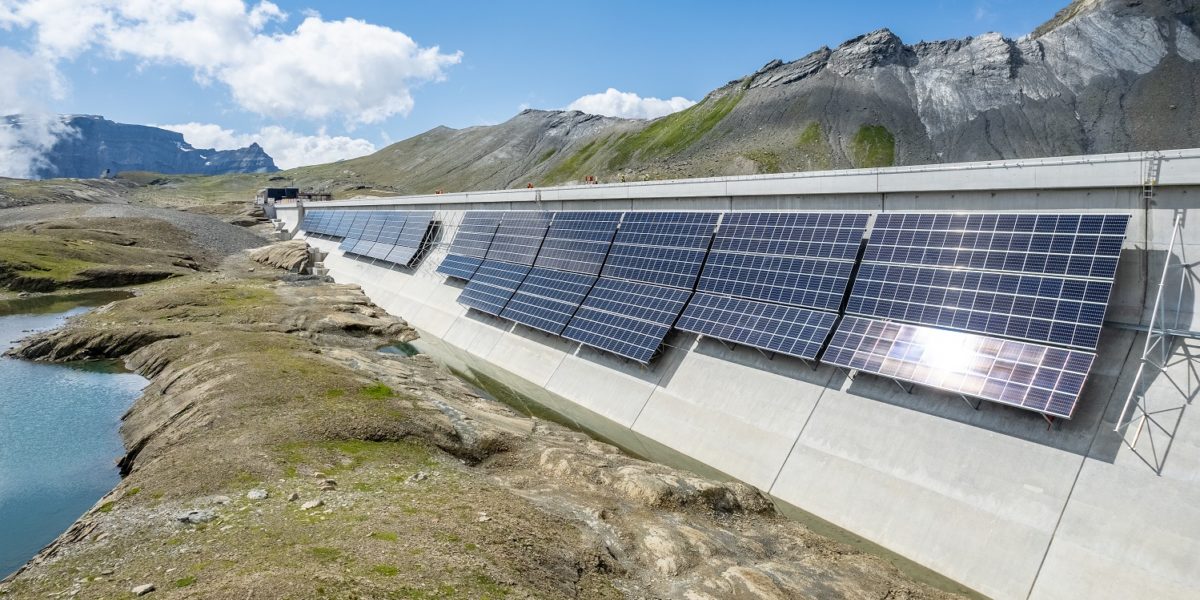Scientists from several research institutes across Switzerland claim to have demonstrated that alpine PV installations are able to provide a higher market value of the produced electricity compared to solar arrays located in urban environments.
The Swiss group utilized the market value approach, which is a methodology assigning a value to a business based on market forces in comparable situations. They defined the market value as the average market price of photovoltaics per MWh over all hours and measured the financial viability in terms of average panel revenue per kW/year. “We also consider average panel revenue, a measure of the financial viability of new capacities (€/kW/year),” it further explained. “To this end, we couple two complementary numerical models to explore economically viable placements of PV, both allowing and forbidding alpine locations.”
They also defined two models to identify the optimized values for PV installation location and corresponding financial viability in Switzerland: the Optimized Renewable Energy by Evolution Strategy (OREES), which allows simultaneous optimization of the placement and the share of renewable electricity generation technologies that are to be added to a system; and the Swissmod, which is a bottom-up electricity market model for Switzerland that includes a detailed electricity network and hydropower representation.
They used the models to compare two main optimization scenarios, for alpine and non-alpine locations, respectively, against a control, urban PV installation scenario.
The alpine scenario includes locations that are lower than 2,700 meters above sea level, at least 150 meters away from slopes steeper than 30 degrees, and within 500 meters of a road. North-facing slopes were excluded, with a total of 600 km2 of land being considered suitable for optimized alpine installations. For the non-alpine scenario, the elevation limit was lowered to 800 meters above sea level, reducing the PV potential area to 450 km2.
Their analysis showed that the altitude constraint that limits the scenarios has a strong impact on the economic performance of the panels, which means that the higher the PV system is located, the better it is for its revenue generation. Both the alpine and the non-alpine scenarios showed higher market values than the urban, low-altitude, PV scenario.
The findings also revealed that placing photovoltaic installations in alpine areas would increase the market value of the produced electricity the most. For example, comparing the scenarios for the year 2040, the control scenario has a market value of €76.84 ($75.36)/kW/year; the non-alpine €83.83/kW/year; and the alpine €93.73/kW/year. That means that the alpine scenario is 21.98% and 11.8% more financially viable than the control and non-alpine scenarios, respectively. On average, the modeled alpine PV installations offer revenues that are on average 20% higher than those of urban installations.
The scientists also found that the Swiss Alps offer the highest market values, with the first 1 GW of potential installed capacity offering revenues 33% higher than the standard scenario. “PV panels located in the Alps can produce much more electricity in winter than anywhere else in Switzerland. Higher solar radiation and higher ground reflection from snow can be exploited with steeper installations geometry to maximize winter production,” the scientist said.
They recently presented their findings in the article “Optimized market value of alpine solar photovoltaic installations,” published in the journal Renewable Energy. The research group includes academics from the University of Basel, the Swiss Federal Institute of Technology in Lausanne (EPFL), the Centre for Energy Policy and Economics (CEPE), and ZHAW School of Management and Law.
This content is protected by copyright and may not be reused. If you want to cooperate with us and would like to reuse some of our content, please contact: editors@pv-magazine.com.



1 comment
By submitting this form you agree to pv magazine using your data for the purposes of publishing your comment.
Your personal data will only be disclosed or otherwise transmitted to third parties for the purposes of spam filtering or if this is necessary for technical maintenance of the website. Any other transfer to third parties will not take place unless this is justified on the basis of applicable data protection regulations or if pv magazine is legally obliged to do so.
You may revoke this consent at any time with effect for the future, in which case your personal data will be deleted immediately. Otherwise, your data will be deleted if pv magazine has processed your request or the purpose of data storage is fulfilled.
Further information on data privacy can be found in our Data Protection Policy.